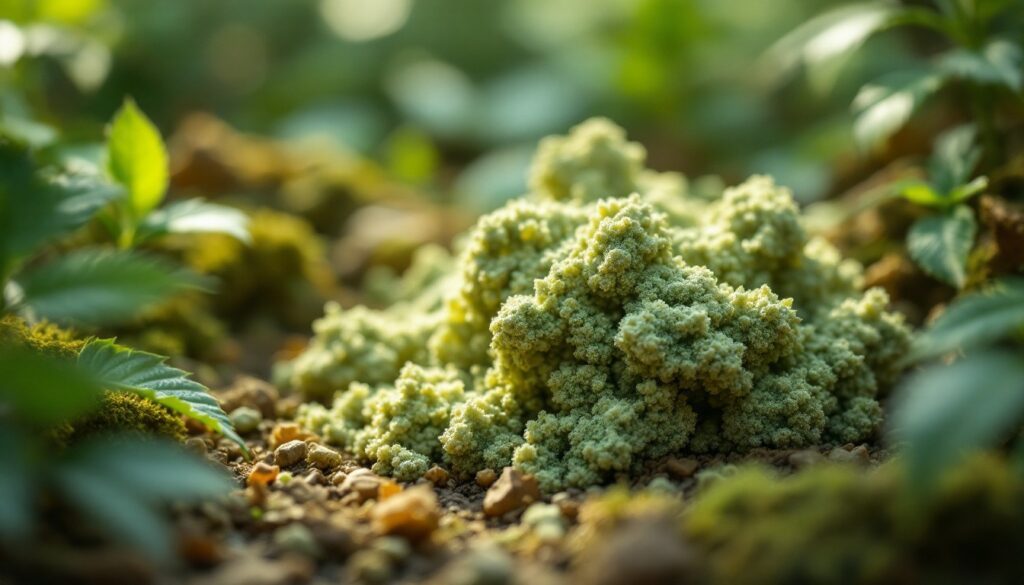The world of cannabis is constantly evolving, and new cannabinoids continue to emerge, attracting the attention of researchers and consumers alike. One of these intriguing compounds is THC-JD. But what is THC-JD, and why is it generating so much interest? This article delves into this fascinating molecule, exploring its unique molecular structure, psychoactive effects, and potential for the future of wellness and therapeutic cannabis. What is THC-JD? THC-JD, or tetrahydrocannabioctyl, is a relatively new cannabinoid that is beginning to make waves in the cannabis industry. It is a variant of THC, but with one key difference: its unique molecular structure features an eight-carbon side chain. This characteristic may influence THC-JD’s interactions with the human endocannabinoid system. Due to its novelty, THC-JD is considered a “rare cannabinoid,” compared to more common compounds such as CBD or classic THC (Δ9-THC). Research on THC-JDis still limited, but initial studies suggest it may possess unique properties compared to other cannabinoids. This could open the door to new medical or recreational applications, increasing its appeal for those seeking alternatives to existing products on the market. To purchase similar products and discover the rich world of these cannabinoids, visit
Sommaire
ToggleWeedy.fr
. A distinctive side chain: impact on effectsOne of the unique features of THC-JD lies in its eight-carbon side chain. Unlike traditional Δ9-THC, which has a five-carbon chain, this modification could potentially intensify the psychoactive effects of the cannabinoid. This chemical peculiarity therefore deserves special attention to better understand how these structural variations can influence user experience.
Although studies are still in the preliminary stages, it is possible that this unique structure allows THC-JD to bind differently to the CB1 and CB2 receptors of the endocannabinoid system. This could not only modulate the intensity of psychoactive effects but also offer new perspectives for the development of targeted treatments. The Origin and Nature of THC-JD As is often the case with new cannabinoids, the question of whether THC-JD is natural or synthetic is crucial. Currently, THC-JD can be described as a natural cannabinoid, although it is rarely found in high concentrations in the traditional cannabis plant. Its extraction requires specific techniques to isolate the compound in sufficient quantities for analysis and commercial use. However, to meet the growing demand for new cannabinoid products, some laboratories are using chemical processes to synthesize THC-JD. The debate surrounding the use of synthetic cannabinoids remains active, however, raising ethical and health questions for consumers. The preference generally goes toward natural compounds, perceived as safer and offering better biological compatibility with the human body. To follow developments in this field, the CBD News Blog is an excellent resource. Different Types of Cannabinoids: Comparison ChartCannabinoid
Type
Characteristics THC-JDRare/Natural 8-carbon side chain, increased potential psychoactive effectCBD
Common/Natural
Non-psychoactive, used for anxiety and inflammation
Δ9-THC Common/Natural Psychoactive, commonly used recreationally HHCSynthetic/Natural
Less intense than Δ9-THC, hydrogenated structure The psychoactive effects of THC-JD As a psychoactive cannabinoid, THC-JD is likely to produce euphoric effects similar to Δ9-THC. However, due to its unique structure, these effects may differ in several respects. Anecdotal reports highlight a sometimes more pronounced experience, possibly requiring responsible use. These reports should be taken with caution, however, as experiences vary from one individual to another depending on personal factors, such as individual tolerance and sensitivity to cannabinoids. In addition to its psychoactive effects, there is growing interest in the potential therapeutic applications of THC-JD. Future research could explore its effects in the treatment of various neurological or psychiatric disorders, similar to some studies conducted on traditional THC. A deeper understanding of this molecule would also allow producers to refine their offerings to meet the diversity of health needs. Current Trends and the Future of THC-JD The curiosity surrounding THC-JD is reminiscent of the past enthusiasm for other cannabinoids, such as CBG or THCV. The legal context also plays a role in assessing its commercial prospects. In the United States, where cannabis laws are primarily determined at the state level, regulations regarding rare cannabinoids vary widely. In Europe, the situation is equally complex, with political decisions influencing the research and development of such compounds.
Weedy.fr
| is among the platforms closely monitoring these developments with a view to potentially including THC-JD in their range of products tailored to the needs of discerning consumers seeking well-being. The | distinctive properties | The recent developments in THC-JD could encourage more brands to invest in this cannabinoid, reflecting a diversification of therapeutic and recreational uses within an evolving regulatory framework. |
|---|---|---|
| Comparison between THC-JD, HHC, and other emerging cannabinoids | Innovation: | As with THC-JD, innovation involves the discovery of new molecular structures that offer new avenues for therapeutic exploration. |
| Regulation: | Each of these cannabinoids must navigate an often uncertain legal environment, directly influencing how they are introduced to the market. | Popularity: |
| As knowledge and accessibility of cannabinoids advance, each may claim a specific niche based on its biological characteristics. | Frequently Asked Questions about THC-JD | What are the typical effects of THC-JD? THC-JD is known for its psychoactive effects, which are potentially more intense than those of Δ9-THC due to its elongated side chain. However, experiences can vary depending on individual tolerance and other factors. Users often report a feeling of euphoria combined with a state of deep relaxation. |
| How does THC-JD compare to CBD? | Unlike CBD, which is non-psychoactive, THC-JD produces psychoactive effects similar to traditional THC but potentially more potent. While CBD is often sought after for its anti-inflammatory and anxiolytic properties, THC-JD is of greater interest to those seeking a more pronounced psychoactive experience. | Is THC-JD legal? |
The legality of THC-JD
The legal status of THC-JD is highly dependent on jurisdiction. In some places, it may be considered the same as other forms of THC, while in others, it may not be specifically regulated. To avoid confusion, it is advisable to check local laws regarding cannabinoids before purchasing or consuming THC-JD.
Alexandre Lacarré is recognized as an innovative and influential leader in the cannabidiol (CBD) industry. Alexandre began his career in the biotechnology sector, where he gained valuable expertise in research and development. Passionate about the therapeutic potential of natural compounds, he quickly shifted his focus to the nascent CBD industry.



